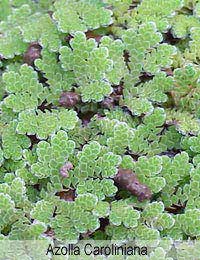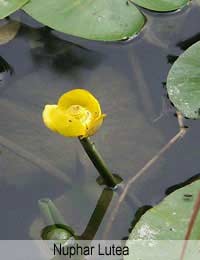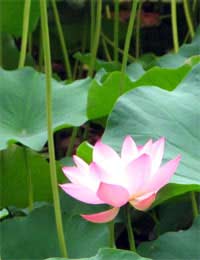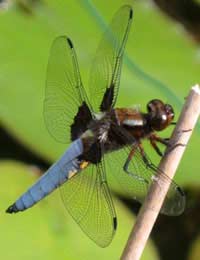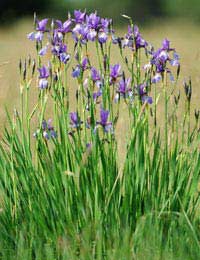Pond Plants – Learn & Grow
Pond Plants balance the ecosystem of their habitat, be it land or water. The pond plants create a nourishing environment for aquatic life by providing them with food and shelter, preventing overcrowding, as well as making the pond look great with their curvy leaves and trailing root systems.
There is a variety of aquatic plants that one could select from, and we advise to pick according to the need of the pond and aesthetics. A common question asked is there really a necessity of pond plants and the answer is firm yes!
Learn about floating pond plants, deep water pond plants, best kinds of pond bog plants, creating a blog plant shelf, marginal pond plants, invasive pond plants to avoid, think you know your stuff? try this pond plant quiz to test your skills!
Have a look at these pond edge plants, perfect for the edges, or work out which oxygenating pond plants are best. There is a quick pond plant FAQ here, if you are having pond plant problems check here. Sometimes you can find pond plants for free,
Some great options for pond plants would be water lilies, learn how to grow water lilies here, and info about how to plant your pond for maximum impact. Maybe water soldiers? Or maybe you’re having trouble managing plant overgrowth, Learn about preventing pests and plant eating insects,
Example Pond Plants for sale:
Auto Amazon Links: No products found.
Pond plants prevent the accumulation of green algae on the surface of the pond. Some of these plants are submerged in water with their long stems reaching the above the water, while others float on water. They provide shade to the pond water which is necessary to control photosynthesis, eliminating the risk of algae growing on the top.
Water in ponds tends to stay fresh for longer periods of time when plants are present. Plants improve the water quality since the sunlight hitting these plants increases the rate of the plants own photosynthesis, releasing oxygen.
Depending on the size of your pond, select flowers which won’t cause overgrowth and completely hide the pond, but instead provide sufficient shading inviting wildlife.
Hornwort and water violets are some of the excellent small pond plant water oxygenators for small ponds. You could decorate it with floating pond plants such as water moss and plant creeping jenny along the marginals as it does not overgrow making it a perfect choice. Marginal pond plants help in giving ponds their shape, adding depth to the edges of a pond, and deep water pond plants are helpful also.
Types of pond plants include:
Oxygenating pond plants
Marginal pond plants
Pond edge plants
Floating pond plants
Floating pond water lilies
Deep water pond plants.
However, large ponds require plants that provide more shading and prevent blankets of algae on the surface. Willow moss and starwort are some excellent choices for oxygenators in large ponds. Water lilies float on the surface of large ponds, they need more sunlight and don’t take too much space whilst creating a beautiful view with their pink hue.
Keeping plants in ponds will result in visibly fewer algae and weed growth, freshwater with healthy aquatic life, and firm soil. The roots of submerged pond plants keep the soil firm, preventing it from blowing away or from important nutrients eroding. Lastly, if you are aware of the benefits of specific pond plants it will result in the nourishment of the pond.
Another benefit of keeping pond plants is that they don’t require a lot of maintenance as the pond water and sunlight are enough to look after for themselves!
However clever the design of your pond, it is not until it has plants in it and around it, that it really begins to come alive. No matter what the finished project is intended to be – fish pond, water feature or wildlife habitat – the presence of plants adds not only to the aquatic environment itself, but to the overall aesthetic balance of the whole garden.
Few other areas in a garden can equal the variety of forms and colours of the array of plants which suit a watery home and the final effect is, in many ways, limited only by your own imagination.
Not all aquatic plants are the same in terms of their requirements and a well planned pond will take this into account, providing the various groups – marginals, floaters, oxygenators and deep-water plants – with suitable places to thrive. The choice is a wide one – from exotic to native and from subtle to spectacular – so there really is something to suit everyone.
Marginal pond plants
Marginals are useful in giving vertical perspective to the pond, drawing the eye upwards from the surface of the water. Naturally occurring around the edges of ponds, these plants are usually accommodated on a purpose-built shelf or ledge around 6-9 inches (15-22cm) deep and are usually planted in pond baskets – perforated pots – to ensure the development of healthy roots. When they are first brought home, they should be positioned so that the top of the pot sits at the water surface level, though once they have become established, they can often be repositioned – the label usually giving the maximum depth they can tolerate.
Typical examples of marginals suitable for most ponds include:
Brooklime (Veronica beccabunga)
Bog Bean (Menyanthes trifoliate)
Corkscrew rush (Juncus effusus spiralis)
Marsh Marigold – (Caltha palustris )
Yellow flag- (Iris pseudocorus )
Water crowfoots – (Ranunculus sp.)
Water Horsetail – (Equisetum fluviatile)
Water Mint – (Mentha aquatica)
Final size is an important consideration in the garden pond and most of these will grow to cover an area of around 30-50cm (12-20in) and sometimes more. Although often seen on sale, the likes of the bulrush (Typha sp.) and reeds (Phragmites sp.) are significantly bigger plants and tend to be vigorous and invasive once established, making them best suited to the larger pond.
Floaters and Oxygenating pond plants
Many kinds of plants float on the surface of the pond, drawing nutrients directly from the water via roots which are un-anchored in soil. They range from the small native duckweeds (Lemna sp.) which are perhaps 5mm across to the much larger and more exotic Water Hyacinth (Eichornia crassipes).
Floating plants offer a simple and instant way to provide additional shade, though many of the commonly sold varieties come from warmer climes and will only survive one season – though they usually spread well enough in the British summer to make the investment worthwhile.
The native Water Soldier (Stratiotes aloides) however, will come back year after year.
Oxygenators are an essential element in a healthy pond, helping to oxygenate the water and absorbing excess nutrients which might otherwise fuel algal blooms. Commonly sold – and highly effective – as an oxygenator, Canadian pond weed (Elodea canadensis) is only really suitable for larger ponds, since it is an extraordinarily vigorous and invasive species and will require drastic thinning out if it is not to choke a small water feature. For smaller ponds – or those intended as wildlife habitats, the native curled pondweed (Potamogeton crispus) is a far better bet.
Deep Water pond Plants
Planted at the bottom of the pond, some 18-60 inches (45-150cm) below the surface, the deep-water plants include probably the most iconic of all water plants – the water lily. When first purchased, the water lily’s basket needs to be stood on a column of bricks so that its leaves lie just below the surface.
As the stalks grow, the basket needs to be progressively lowered until it rests on the bottom. Alternatively, you can trim off all the mature leaves and position the plant at the bottom, allowing the new shoots to grow until they reach the surface. The leaves of deep-water plants, along with floaters, provide good surface cover – ideal for wildlife and vital for reducing the problems of algae.
The majority of pond plants are very easy to look after, grow well and require little in the way of maintenance beyond an occasional tidying up to remove dead foliage or over-blown flowers – though it is important to choose plants which suit the pond’s size and depth.
With careful selection and a little imaginative planting, the pond should provide an attractive focal point in the garden throughout most of the year.


